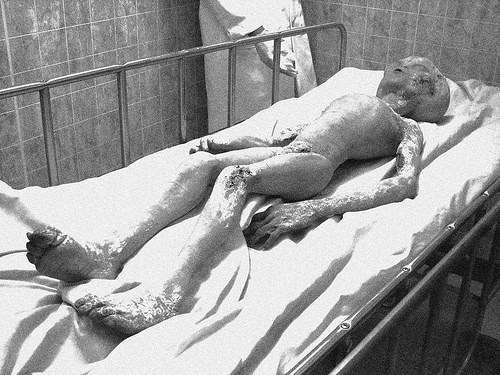What the Area 51 Reveal Tells Us About Government Secrecy

The big headline today is the report showing thousands of privacy-rules violations in the National Security Agency's surveillance programs. But that's not the only surveillance revelation in the news today. A newly declassified Central Intelligence Agency report finally cops to the existence of the secretive Nevada test facility known as Area 51, and admits to many previously previously reported details about the site's purpose, which centered on the U-2 spy plane.
Conspiracy theorists have long pointed to Area 51 as a possible location for super-secret extraterrestrial contact, but anyone hoping to find evidence of little green men is likely to come away disappointed. Instead, the report, "Central Intelligence Agency and Overhead Reconnaissance: The U-2 and Oxcart Programs, 1954-1974," which was released in response to a Freedom of Information Act (FOIA) request by researchers at George Washington University's National Security Archive, explains how the facility was originally picked, and how it became used as a training ground for pilots in the U-2 spy plane program during the middle part of the 20th century.
The 400 page report was previously released in a much more heavily redacted version in 2002. This new release contains the first official public references the existence of the site, including the names of pilots who flew U-2 missions outlined in the report, various codewords used to describe parts of the project (including HBJARGON, the secret name of the U.S. U-2 base in Pakistan), discussion of British participation in spy plane surveillance, and details of U-2 operations in China, India, and France. It also contains a map of the site, which you can see after the jump.
Even without any aliens, it's all pretty interesting. It's also more than a little revealing about the government's approach to secrecy when it comes to spying and surveillance. The first U-2 spy plane launched from Area 51 in 1955. Reporters and researchers, not to mention conspiracy buffs, have been looking into activities at the site for decades. And little of the information in the report is new. According to a statement by British author Chris Pocock, who wrote a history of the U-2 spy plane, released by the National Security Archive along with the report, "Nearly all of the newly released information is already in my books."
In other words, this is pretty much all old news, well established by credible reporting from experts. And yet it took almost six decades from the time of the first U-2 spy plane's launch at the facility for the government to admit its existence, and confirm, in a report that still contains some redactions, broad details about the spy plane program's activities. And this revelation only came in response to a FOIA request that was made in 2005.
This a pretty extreme commitment to secrecy. And it shows how unwilling the government is to reveal anything at all, even information that is obvious and already known, about its surveillance activities. And it's why the other, bigger spying revelations today, especially when coupled with the White House's hamfisted, after-the-fact attempts to rewrite inconvenient interviews with sources, are so important.
See the Area 51 map after the jump.



Show Comments (76)